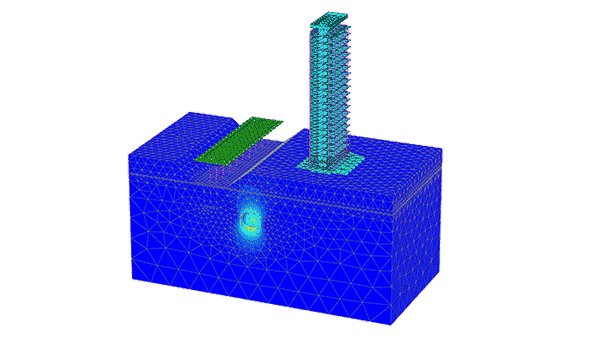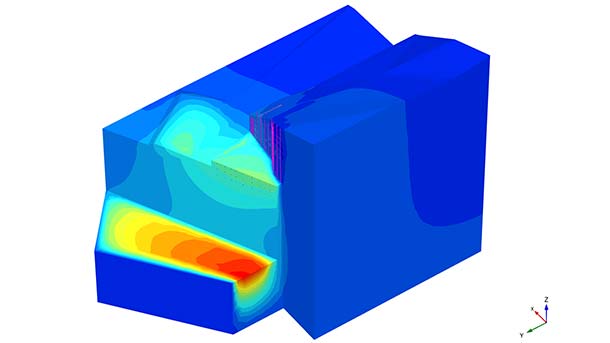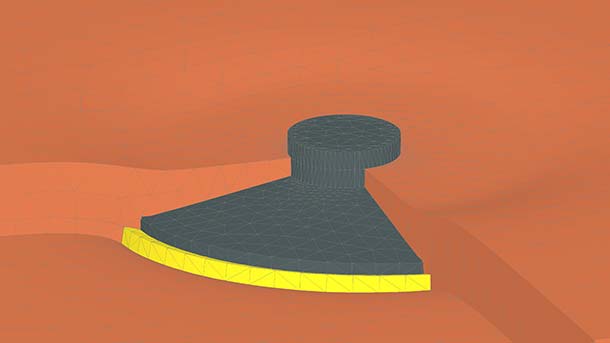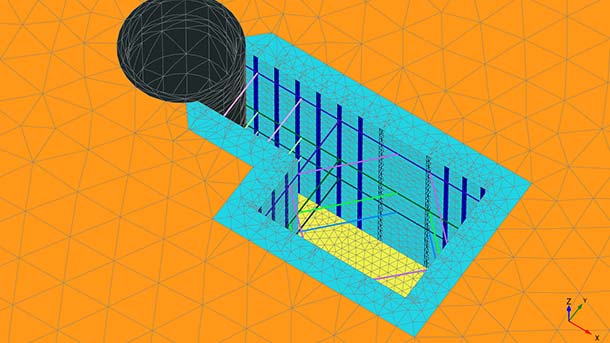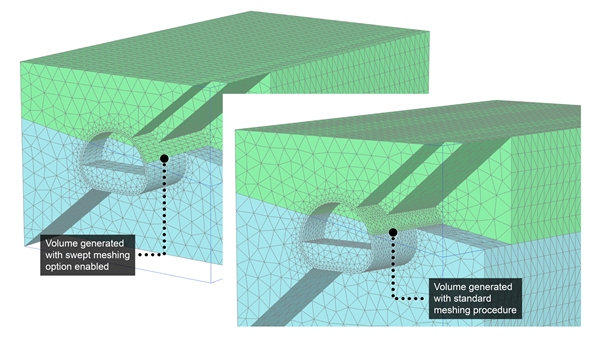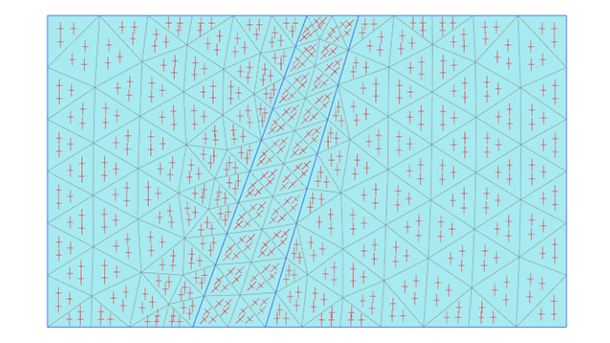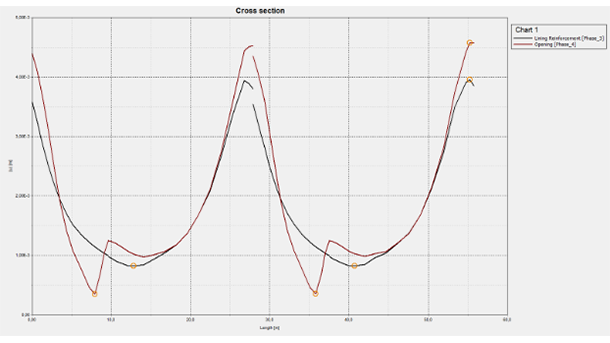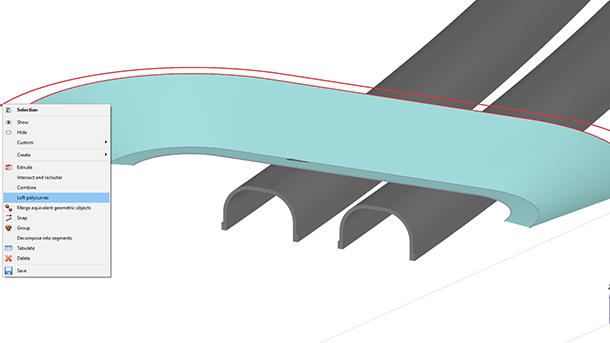Software de Elementos Finitos Geotécnicos 3D
Descrição
O PLAXIS 3D é um potente e intuitivo pacote FE para a análise 3D da deformação e estabilidade em engenharia geotécnica e mecânica das rochas.
Faça uma análise tridimensional de deformação e estabilidade em engenharia geotécnica e mecânica de rochas com o PLAXIS 3D. Esteja você trabalhando em projetos simples ou complexos, ou se você estiver trabalhando em escavações, aterros e fundações ou aberturas de túneis, mineração e geomecânica de reservatórios, esse pacote de elementos finitos tem o que você precisa. Empresas e instituições de engenharia nos setores de Engenharia Civil e Geotécnica aproveitam a diversidade de recursos de desenho semelhantes ao CAD do Plaxis 3D, bem como suas operações de extrusão, interseção, combinação e agrupamento.
Características
-
Automatic Swept Meshing
Speed up mesh generation with PLAXIS 3D. Our latest release offers the new swept meshing option in the mesh mode. Automation determines usable volumes and sweeping direction in mesh generation to develop more efficient meshes, especially for geometry featuring linear objects like tunnels, road embankments, and levees.
-
Analisar resultados com pós-processamento
Aproveite as poderosas e versáteis forças de pós-processamento e exibição, deslocamentos, tensões e dados de fluxo em gráficos de contorno, vetor e iso-superfície de várias maneiras. As capacidades de seção cruzada permitem uma análise mais detalhada dos resultados. Os dados podem ser copiados de tabelas ou através de scripts baseados em Python para fins de processamento adicionais fora do PLAXIS. O gerenciador de curvas permite a criação de gráficos, plotando vários tipos de resultados a partir dos dados de cálculo disponíveis.
-
Avaliar estresses e deslocamentos
Modele com precisão o processo de construção ativando e desativando clusters do solo e elementos estruturais em cada fase de cálculo com a construção por estágios. Com os tipos de cálculo plástico, consolidação e análise de segurança, uma ampla gama de problemas geotécnicos pode ser analisada. Modelos constitutivos variando de simples modelos lineares e modelos não lineares altamente avançados pelos quais podem ser simulados os comportamentos de solos e rochas. Procedimentos de cálculo robustos e bem comprovados asseguram a convergência dos cálculos e resultados precisos.
-
Dynamic with consolidation calculation type
Simulate the coupling between soil deformations and transient seepage in the dynamic loading phase. Using this new, advanced calculation type offers generally improved stress predictions and accounts for both eventualities of accumulation and dissipation of excess pore pressures during earthquakes.
-
Field stress per cluster
The field stress initial calculation type allows for direct specification of in situ stress conditions on a volume of soil. It is now possible to assign a different field stress property to individual soil volumes and borehole layers, allowing you to independently input the initial stress state by magnitude and orientation for each of those clusters. The cluster-based field stress complements the global field stress and makes it easier to define the in-situ stress for geological models. This allows easily modeling non-uniform deepground conditions, such as those encountered in deep tunneling or reservoir geomechanics.
-
Girder definition in tunnel designer
Tunnels are often reinforced with transverse ribs, which can now be modeled as curved beam elements located at specific intervals in the 3D tunnel designer. The option to add transverse girders, together with plate and volume lining, rockbolts, and umbrella arches, enables modeling complex tunnel reinforcement systems. Girders are a natural component in the slicing and sequencing features of the tunnel designer, enabling you to define the entire construction sequence.
-
Line pass / Cross section curves
Create cross-section curveplots from any arbitrary line cross section, structural element, or centerline generated from the structural forces in volume piles capability. It allows you to create a single curveplot to compare how the settlements at the surface level evolve for multiple phases, or to compare the bending moment along the length of a diaphragm wall or tunnel lining (either modeled as plates or volume elements) across multiple phases simultaneously.
-
Loft polycurves and blend surfaces
Both these features can be used to provide smooth transitions between non-homogeneous sections. The blend surfaces feature generates a continuous surface that joins a set of other surfaces by filling the voids between them. The loft polycurves command fits a surface to a set of polycurves, such as turning a series of spatially located 2D cross-sections into a consistent 3D geometry.
-
NURBS curves
Use NURBS curves to model arbitrary shapes in 3D. NURBS curves are automatically generated from a series of successive points. These curves and polycurves can be combined to generate almost any geometry. NURBS curves can also be specified as extrusion paths, which enables the generation of curved linear elements with uniform cross section. For example, a cross section that is defined by a polygon or polycurve can be extruded along the trajectory defined by a NURBS curve.
-
Scripting reference manual as a Jupyter notebook
Easily learn Python-based remote scripting in PLAXIS with the new scripting reference manual. Sample scripts for each of the commands in PLAXIS are offered in a Jupyter notebook. These samples can be run live in the software to see and understand what happens. You can also edit and rerun the samples and see the effect of your changes, offering a great way of learning-by-doing.

